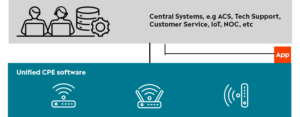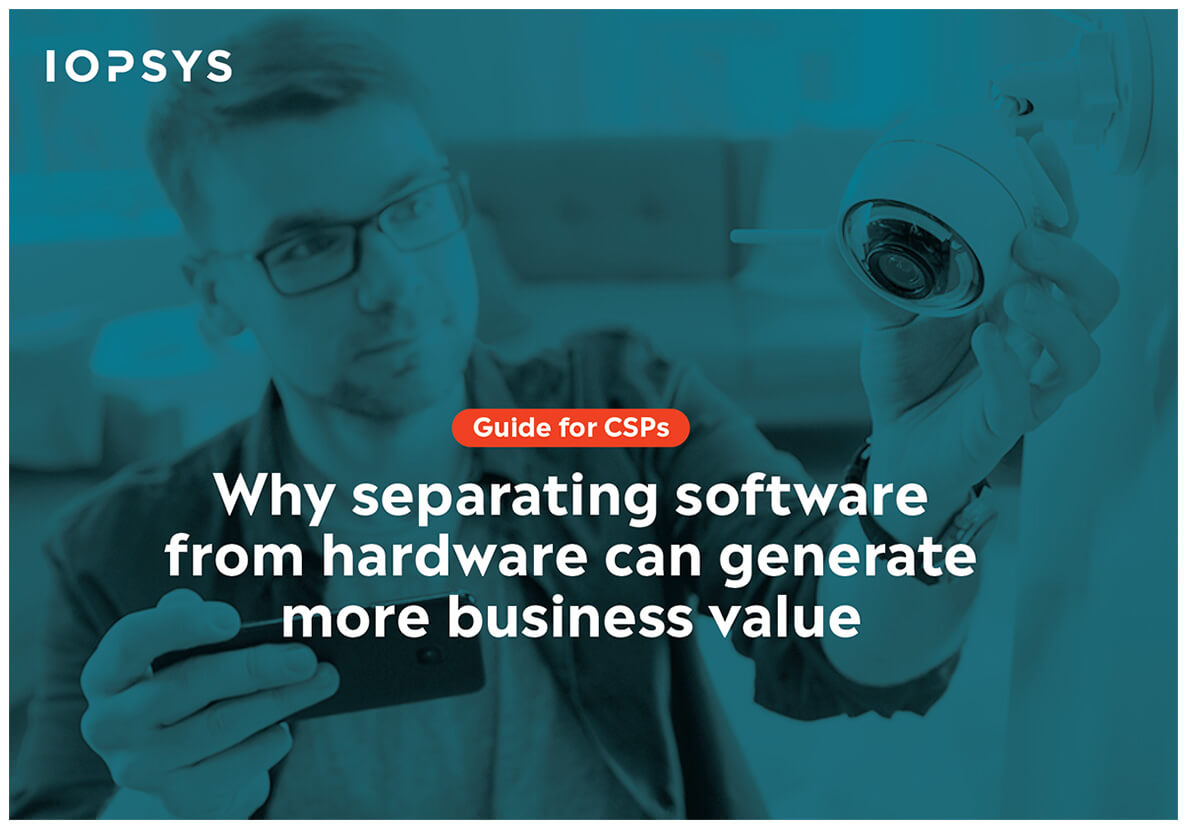
Leveraging the advantages of a unified software approach
by Mårten Olsson
For communications service providers (CSPs) looking to transform their digital home business, separating software (SW) from customer premise equipment (CPE) hardware (HW) is one of the key drivers to enable this transition. Here’s how.

Customer Engagement Manager, IOPSYS
Facing the complexity of multiple hardware and software
For CSPs offering broadband services to end consumers, dealing with several HW models and SW can take time and effort. Separating the SW from HW is one way to manage this challenge. And what if there is ONE SW available to manage all the HW versions?
By separating the SW and HW, CSPs can deploy a single unified SW where a homogenous SW layer applies to all devices in the home. In addition, having open-source SW becomes a significant differentiator in effectively managing devices.
Comparing traditional software vs. unified software
If we take a closer look at managing traditional SW compared to unified SW, there are several differences. Traditional SW requires complex upgrades because each SW has its own path. In addition, maintenance and independent planning is needed for each SW. In comparison, unified SW requires only ONE SW when upgrading, making it easy to monitor and support the process. There are also fewer interfaces to central systems.
Third-party applications on top of traditional broadband services are a competitive opportunity for CSPs to offer new products and services to end consumers. For instance, if CSPs plan to provide a new application, integrating it is difficult and complicated if multiple SW exists. With unified SW, there is only ONE integration per 3rd party application, making it smoother and quicker when adding more applications.
A unified SW layer offers flexibility and more cost-efficient management of resources. In addition, an open-source operating system such as IOWRT provides an SW platform for CSPs to meet consumer demand and manage competitors. IOWRT combines technology from the OpenWrt* community with carrier-grade requirements for broadband and IoT.
Impact on tech support, customer service and end customer

With a unified SW approach, it has a business impact on tech support and customer service, and sales. For instance, tech support only needs deep knowledge of one SW (rather than several SW versions) and how it interacts with the integrated apps. As a result, the complexity facing tech support decreases dramatically.
The same applies to customer service and sales. Traditional SW on each device has a specific feature set, different from each other. For example, if customer service wants to effectively market a 3rd party security solution, such as a security App, it only works on specific models of your devices. Complex requirements for certain features could be clearer to the customer. This makes it challenging to create one single offer for the end customers, and customer service will miss out on upselling opportunities.
From the end customer perspective, they have a better experience in the quality of service from tech support and customer service as they will have a deeper understanding of the SW. Customer interaction will be easier and smoother.
Overall, a unified SW strategy can impact effective resource management and meet customer needs for their digital home.
*OpenWrt is a trademark owned by software in the Public Interest, Inc.
